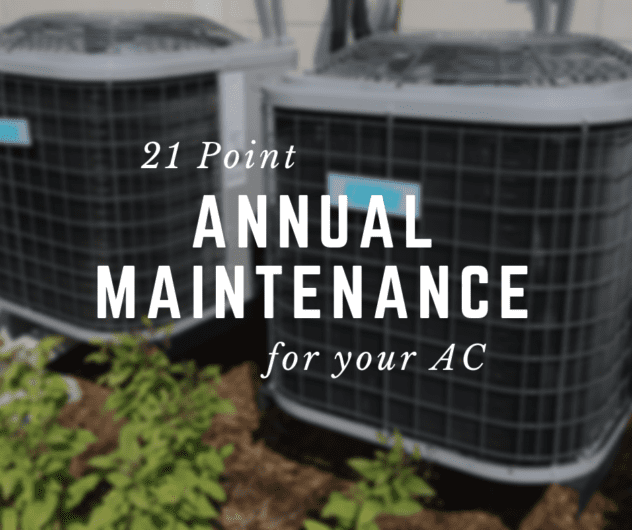Heating and AC Maintenance Services
You know that regular maintenance improves your car’s mileage and
performance – but you may not know that regular maintenance can also
improve the longevity and performance of your heating and air-conditioning
units.
performance – but you may not know that regular maintenance can also
improve the longevity and performance of your heating and air-conditioning
units.
According to the U.S. Environmental Protection Agency, regular
maintenance on your heating and AC systems gives you these great advantages:
maintenance on your heating and AC systems gives you these great advantages:
●Increases the lifespan of your units by 5-7 years
● Decreases service calls by 25 – 35%
● Cuts your utility bills by helping your system work more efficiently
● Saves you additional money by fixing small problems before they turn
into big ones
● Keeps dust and allergens down in the home
● Decreases service calls by 25 – 35%
● Cuts your utility bills by helping your system work more efficiently
● Saves you additional money by fixing small problems before they turn
into big ones
● Keeps dust and allergens down in the home

21 Point Annual Maintenance
This 21-Point Annual maintenance is the perfect way to check up on your
HVAC system:
HVAC system:
● Chemically clean and thoroughly wash your air
conditioner’s condenser coil(s).
● Wash or Replace up to 1′′ air filter.
● Check its condensing unit for level and proper motor and
bearing wear (if accessible.)
● Lubricate its motor and fan bearings if applicable.
● Clean and inspect its evaporator coil if readily
accessible.
● Clean, level and check its thermostat operation.
● Adjust and clean its blower motor and fan assembly.
● Clean and inspect its condensate drain lines and fittings.
● Inspect, tighten and test all electrical connections
including the electrical disconnect switch.
● Inspect, tighten and test its low voltage cooling wiring.
● Test the system starting and running capacitors.
● Test all controls, switches, relays, transformers, contactors, motors and
fans.
● Measure starting and running amperes, line voltage, and control voltage.
● Test the system’s starting capabilities.
● Check the system for proper air flow (supply and return differential).
● Inspect and test all of its safety controls.
● Check its refrigerant pressures and temperatures.
● Test and record its super-heat and sub-coooling
conditioner’s condenser coil(s).
● Wash or Replace up to 1′′ air filter.
● Check its condensing unit for level and proper motor and
bearing wear (if accessible.)
● Lubricate its motor and fan bearings if applicable.
● Clean and inspect its evaporator coil if readily
accessible.
● Clean, level and check its thermostat operation.
● Adjust and clean its blower motor and fan assembly.
● Clean and inspect its condensate drain lines and fittings.
● Inspect, tighten and test all electrical connections
including the electrical disconnect switch.
● Inspect, tighten and test its low voltage cooling wiring.
● Test the system starting and running capacitors.
● Test all controls, switches, relays, transformers, contactors, motors and
fans.
● Measure starting and running amperes, line voltage, and control voltage.
● Test the system’s starting capabilities.
● Check the system for proper air flow (supply and return differential).
● Inspect and test all of its safety controls.
● Check its refrigerant pressures and temperatures.
● Test and record its super-heat and sub-coooling
● Monitor the fan motor and compressor operating temperatures.
● Test and record the AC system for proper production and capacity.
● Complete and present to you a full written report and make any necessary
● Test and record the AC system for proper production and capacity.
● Complete and present to you a full written report and make any necessary
recommendations

